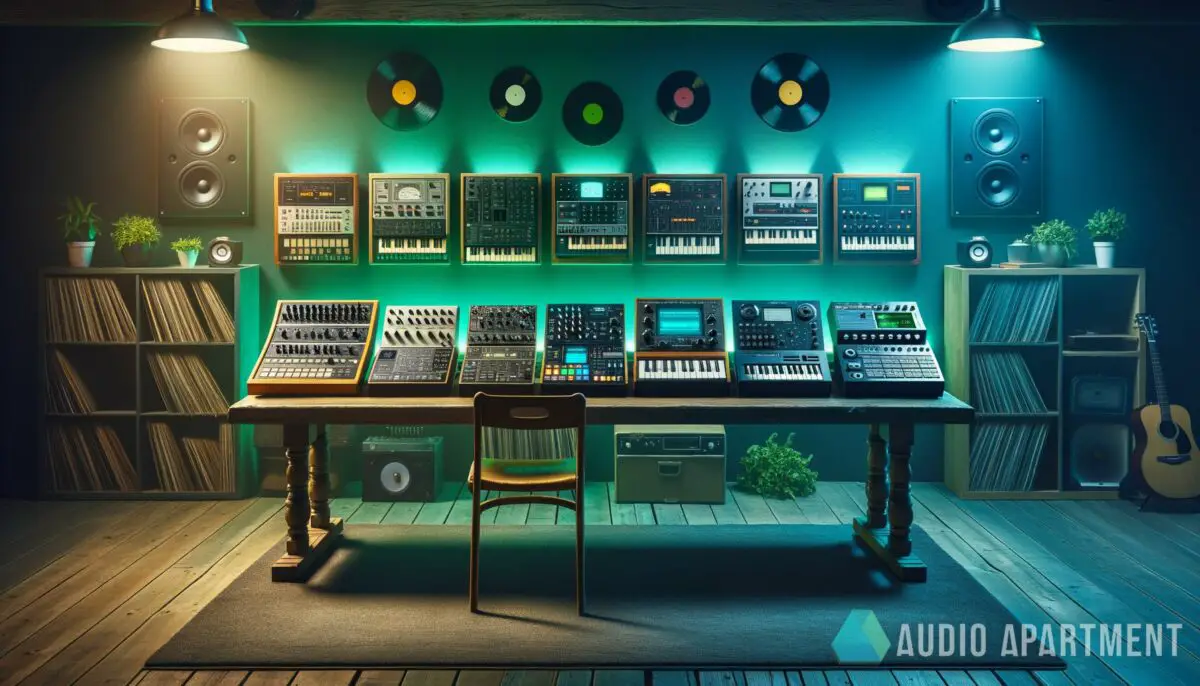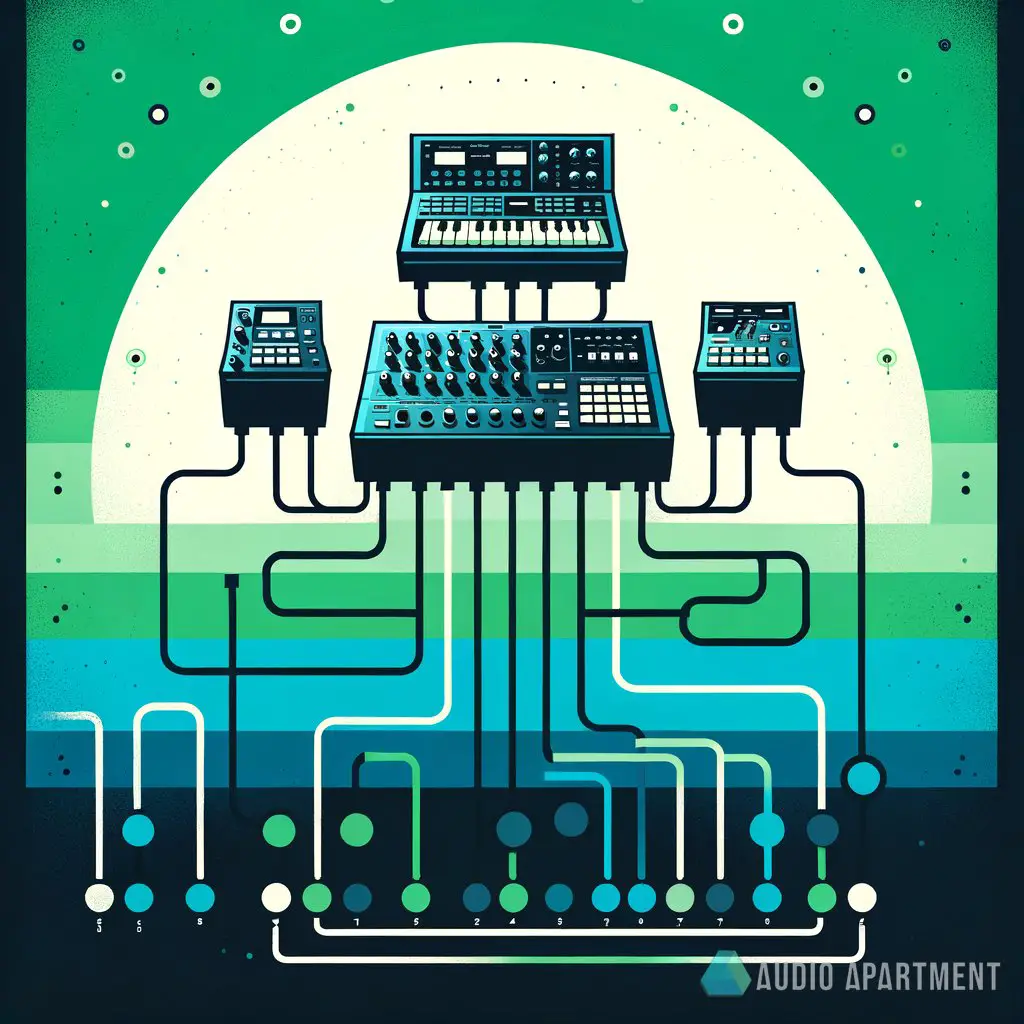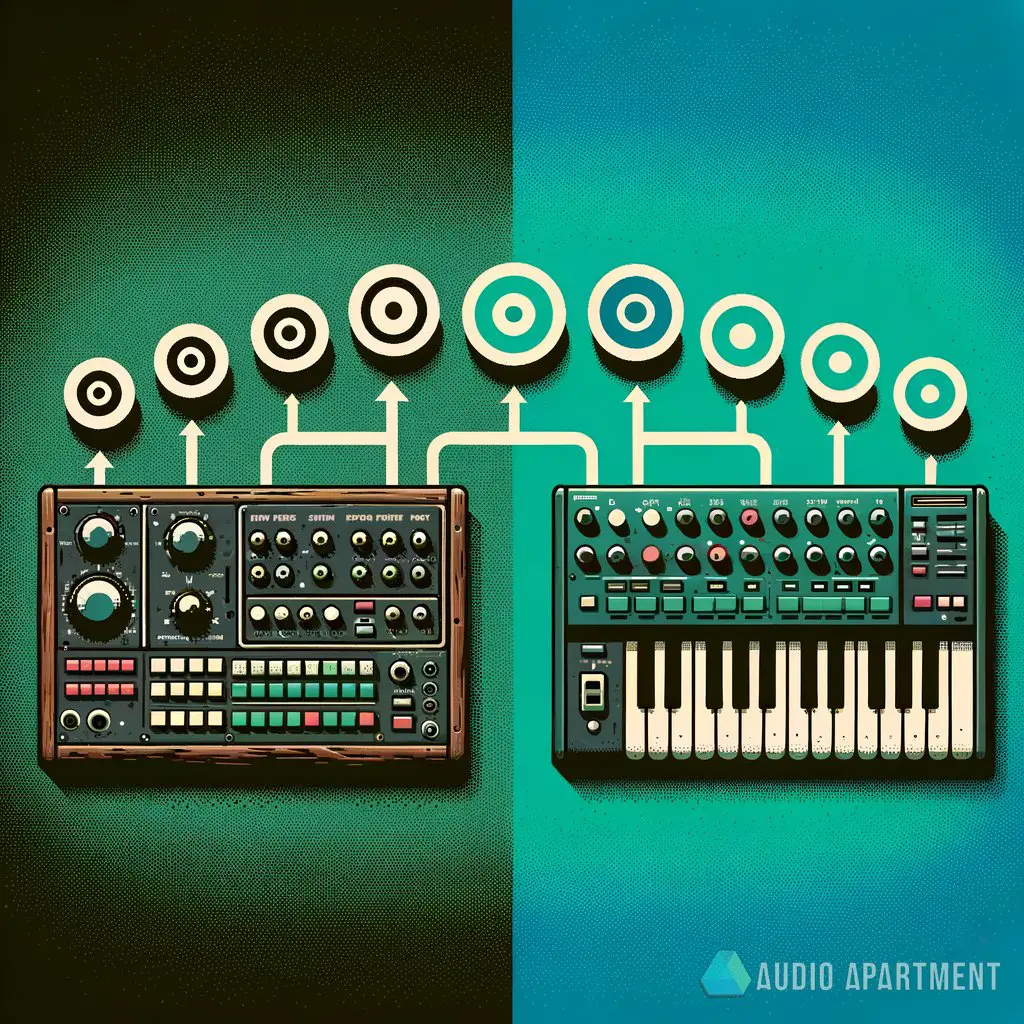Ever wonder how beatmakers back in the day managed without the tech we’ve got now? I heard this heated debate at my last gig about how drum machines have shaped music, and it got me thinking.
Whether you’re vibing to classic rock or chilling with some 90s hip-hop, those beats usually owe their origins to drum machines. And it’s not just about laying down a sick beat – it’s about how these machines have evolved to change the game.
If you want to up your producing game, check out the top studio monitors – because hearing is believing. Why do drum machines matter in music production? In this post, we cover the tight evolution from simple beatboxes to complex rhythm wizards.
Key takeaways
- Analog to digital evolution transformed drum machine capabilities.
- Drum machines shape genres like hip-hop, rock, and EDM.
- User-friendly interfaces enhance music production today.
- Invest in quality gear for the best beat-making experience.
How Have Drum Machines Evolved in Music Production?
When the first drum machines hit the scene, they were quirky gadgets that could pop out pre-set patterns – kind of like having a robotic drummer with one heck of a limited repertoire. But don’t knock ’em; these rhythm boxes laid the groundwork for the modern beats we jam to today.

Drum machines went from mechanical metronomes to digital beat-masters.
Early Days to Digital Age
- 70s and 80s: Vintage mechanical drum machines set the tempo.
- Digital Revolution: Sampling capabilities and programmability changed the game.
- Today’s Beats: Touch sensitivity and real-time control create dynamic soundscapes.
We’ve seen drum machines evolve from analog curios with preset patterns to become the heart and soul of the beat-making world. In the 70s and 80s, they cut their teeth in disco and early electronic music.
Fast forward to the digital revolution, and drum machines grew up, gaining sampling capabilities that empowered producers to program any rhythm imaginable. Nowadays, with touch sensitivity and real-time control features, they’re more like crafting a vibe than just playing back beats.
For the lowdown on mixing these beats, dive into essential audio mixing techniques.
It’s wild how they’ve expanded in functionality, allowing for a vast array of sounds and patterns that can be fine-tuned to the nth degree. Gone are the days of simple robotic rhythms – now, it’s about creating beats that can go toe-to-toe with a live drummer.
And it’s not just hip-hop either; all genres have felt the touch of these beat-making beasts. From thick kicks that punch through the mix to snappy snares that snap, today’s drum machines offer a palette of percussion that’s just bananas.
I’ll keep it a hundred, I’m no expert, but it’s clear these machines are no flash in the pan. They’ve changed the game for bedroom producers and top-dog hitmakers alike.
Investing in a quality pair of studio monitors or headphones isn’t just a spend, it’s a voyage into authenticity. Get to know your drum machine’s sequencer like it’s your rhythm whisperer – it’s your ticket to crafting not just beats, but legacies.
My buddy once told me this story about a legendary producer who could make a drum machine sing – literally crafting tunes that nobody believed were machine-made. Reminds me of that epic scene in “It Might Get Loud” where legendary guitarists discuss their craft; it’s not just about the gear, but it’s about the magic you make with it – and drum machines hold a lot of that studio magic.
If you’re hunting for the best tools to capture your beats, you can’t miss the sickest studio mics in the biz.
AKAI Professional MPK Mini MK3

AKAI Professional MPK Mini MK3
Evolution of drum machine features
The transformation from analog to digital has been pivotal in the evolution of drum machines. As we transition into a more digitized space, the capabilities of these machines have exploded.
The 808, for instance, with its iconic booming bass, has become synonymous with the development of entire music genres. We have witnessed an increase in memory capacity, allowing producers to store more beats and samples, bringing variety to their music.
Analog roots
The earliest drum machines were analog and offered limited preset patterns which were revolutionary for their time, but they lacked the flexibility of modern machines’ custom beats. They were fundamental in genres like disco, aiding bands without full-time drummers.

Digital expansion
With the shift to digital technology in the ’80s, machines like the LinnDrum brought sampled sounds with higher fidelity and the ability to sequence custom patterns. It marked a seismic shift in music production flexibility, allowing producers to experiment with layering different sounds and rhythms from one box.
From presets to programmability
The programmable drum machines emerged, shaking the music industry with their ability to create and store patterns. This feature was a game-changer, allowing musicians to engineer unique rhythms that would define the sonic landscapes of their tracks.
Check out the overview of how the analog warmth affects digital recordings to understand the interplay of these formats in music production.
Drum machines in modern music genres
The impact of drum machines has spanned across multiple music genres, altering the course of music history through varied applications and innovations. From 90s alternative rock to today’s pop hits, these machines continue to lay down the rhythmic foundations.
Hip-Hop and the 808
The Roland TR-808, despite its initial commercial failure, became a cornerstone of hip-hop and electronic music. Its distinctive low-end thump and snappy snare sounds helped shape the backbone of modern hip-hop beats.
Rock and digital sampling
Rock bands in the 80s, like Nine Inch Nails, embraced the digital sampling capabilities of drum machines to create industrial sounds that complemented guitars and other traditional rock instruments.
The EDM boom
Electronic Dance Music’s rise in the 21st century owes much to the versatility and power of modern drum machines. They allow DJs and producers to manipulate beats on-the-fly, enhancing live performance capabilities.
For a deep dive into the role of drum machines in modern music production, sift through the various DAWs for producers that integrate these machines seamlessly into their workflows.
Drum machine interfaces and usability
With the drastic improvements in technology, the user interface and usability of drum machines have significantly evolved. They are no longer cumbersome and inaccessible; instead, they now cater to the needs of modern producers with intuitive design and functionality.
Interface evolution
Early drum machines had basic interfaces with limited control options. Now, touchscreens and programmable pads offer intricate control, making music production a more tactile and intuitive experience.
Integration with other equipment
Drum machines now integrate effortlessly with other studio equipment, including DAWs, MIDI controllers, and synthesizers, creating an interconnected ecosystem within the producer’s studio. The ease of integration has become a crucial factor for many musicians.

Towards a more live experience
Modern drum machines mimic live drumming more closely than ever. Features like velocity and pressure sensitivity make them responsive to a producer’s touch, allowing for a more dynamic and expressive performance.
Explore the best ways to combine different studio gear by checking out the top MIDI controllers for producers.
Here’s an insightful table illustrating the stark differences between early and modern drum machines:
| Year | Model | Notable Feature |
|---|---|---|
| 1972 | Roland TR-808 | Analog sounds, iconic bass used in hip-hop |
| 1980 | Linn LM-1 Drum Computer | First drum machine with digital sampling |
| 1987 | E-mu SP-1200 | 10 seconds of sampling with easy interface |
| 2022 | Modern Drum Machines (Various) | Touch sensitivity and advanced programmability |
When diving into the realm of music production with drum machines, there’s a beat-laden path to glory and a few rhythm traps to avoid. Let’s lay down some dos and don’ts to help you sync up your machine mastery and keep the groove tight.
| Do | Don’t |
|---|---|
| Experiment with various genres and patterns | Limit yourself to presets and one music style |
| Integrate with DAWs and other music software | Overlook the importance of software updates |
| Use MIDI controllers for more control options | Ignore modern features like touch sensitivity |
| Keep abreast of new drum machine releases | Get stuck in old ways of programming beats |
More drum machine tips
Strolling into the beat-making process with your drum machine can be like dropping the needle on your favorite vinyl – it’s about hitting the sweet spot. Here are a few more tips to keep the rhythm rolling and the creativity flowing:
- Get familiar with the history of drum machines – understanding the classics can inspire new beats.
- Invest in a quality pair of studio monitors or headphones; you’ll need to hear those beats crisply. Check out these outstanding studio headphones for an immersive experience.
- Keep the firmware of your drum machine up to date to avoid missing out on new features.
- Don’t be afraid to layer your sounds; stacking kicks or snares can give your track some serious heat.
- Learn the ins and outs of your machine’s sequencer – it’s the key to crafting complex, head-nodding patterns.
- Utilize effects like reverb, delay, and compression to add depth and vibe to your rhythms.
If you are a visual learner, check out this video titled ‘Why Use Real Drum Machines In Dance Music’
Frequently asked questions (FAQ)
How do you sync a drum machine with other studio hardware?
Syncing a drum machine with other studio hardware, such as synthesizers and sequencers, typically involves using MIDI (Musical Instrument Digital Interface). MIDI allows multiple pieces of equipment to communicate and synchronize with each other, ensuring that your drum patterns and musical elements stay in perfect time.
Can drum machines be used for live performances?
Absolutely, drum machines are not just studio wonders; they rock on the live scene as well. Many modern drum machines are designed with live performance in mind, offering real-time controls, portability, and durability to withstand the energetic environment of stage performances.
What is the benefit of using analog drum machines over digital ones?
Analog drum machines offer a warmth and punchiness in their sound that digital ones usually strive to emulate. The charm lies in their imperfections and the unique character they bring to beats, which can contribute to a more organic and nostalgic feel in music production.
Final thoughts
As we wrap up this jam session on drum machines, remember that they are more than just an instrument – they are a nexus of tradition and innovation in music production. From hip-hop to rock, these machines continue to pound out the heartbeat of diverse genres.
Whether you’re a seasoned producer or just starting out, understanding the evolution and application of drum machines can elevate your music to new rhythmic heights.
How has the drum machine influenced your own music production? Did I cover everything you wanted to know? Let me know in the comments section belowI read and reply to every comment. If you found this article helpful, share it with a friend, and check out my full blog for more tips and tricks on music production.
Thanks for reading and keep laying down those beats that make the world bob its head.















